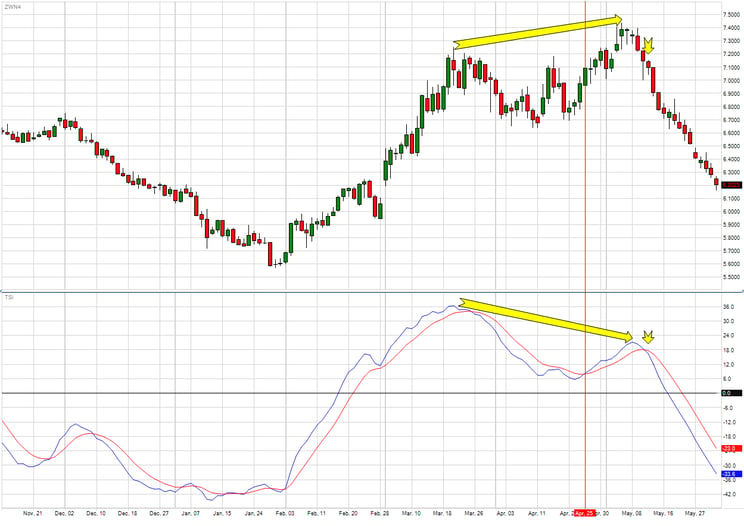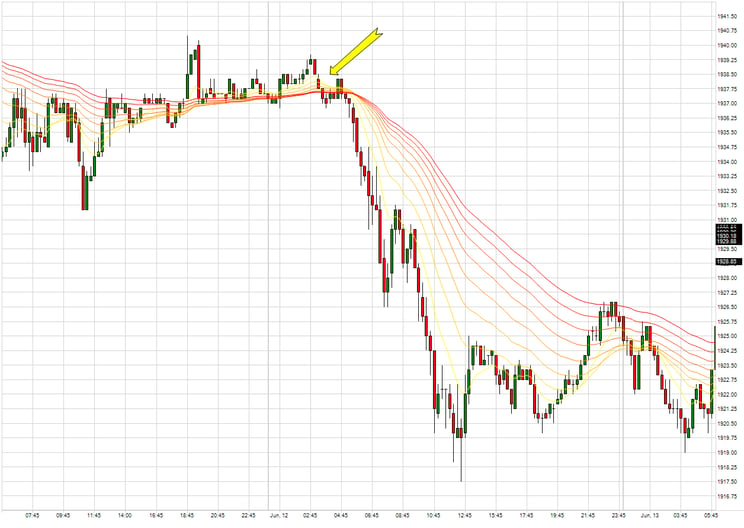The Moving Average Ribbon indicator is a series of moving averages of different lengths plotted at the same time on a chart. The result is a ribbon appearance that gives a 3 dimensional look.
The ribbon is made up of 8 different length moving averages. In this indicator, an exponential moving average is used. The shortest moving average is called the base length. This is an input that can be set in the properties of the indicator. By default, it is set at 10. The rest of the averages are based off of the increment property, which is also defaulted to 10. The increment is the amount added to each average. For example, the second line is set to a 20 period, the third line is set to 30 and so on. Changing either the base or the increment will allow you to adjust the sensitivity of the indicator. Smaller numbers are more reactive to price movement and larger numbers are slower acting or smoother.
Traditional interpretation looks for all the averages to be moving in the same direction to determine that a trend is strong.
Any trades are educational examples only. They do not include commissions and fees.

Positions are entered or added on to when the bars pull back or retrace to the lower moving averages as the blue arrow indicates in the image above. While this is a very basic interpretation, I choose to use a different approach in the interpretation of the Moving Average Ribbon indicator. I already have plenty of indicators that measure trends or tell me if a market is in a trend.
I like to look for the ribbon to consolidate and collapse on itself. These indicate a period of inflection and often a breakout point.

The yellow arrow shows where the ribbon collapses. In my opinion, a potential way to take advantage of a possible move is to place a bracket order above and below the current price channel.
Any trades are educational examples only. They do not include commissions and fees.
The time frame this indicator is applied to will determine the type of strategy to use. On intraday charts, I would suggest sticking to trading the underlying instrument. However, if it is applied to a daily chart and you see the ribbon collapse, options can be a way to trade as well. Employing an options straddle strategy can possibly take advantage of a new trend after the ribbon collapses.
As with all indicators, there are many ways to interpret them and use them to determine proper strategies. You have to find what works for you.


